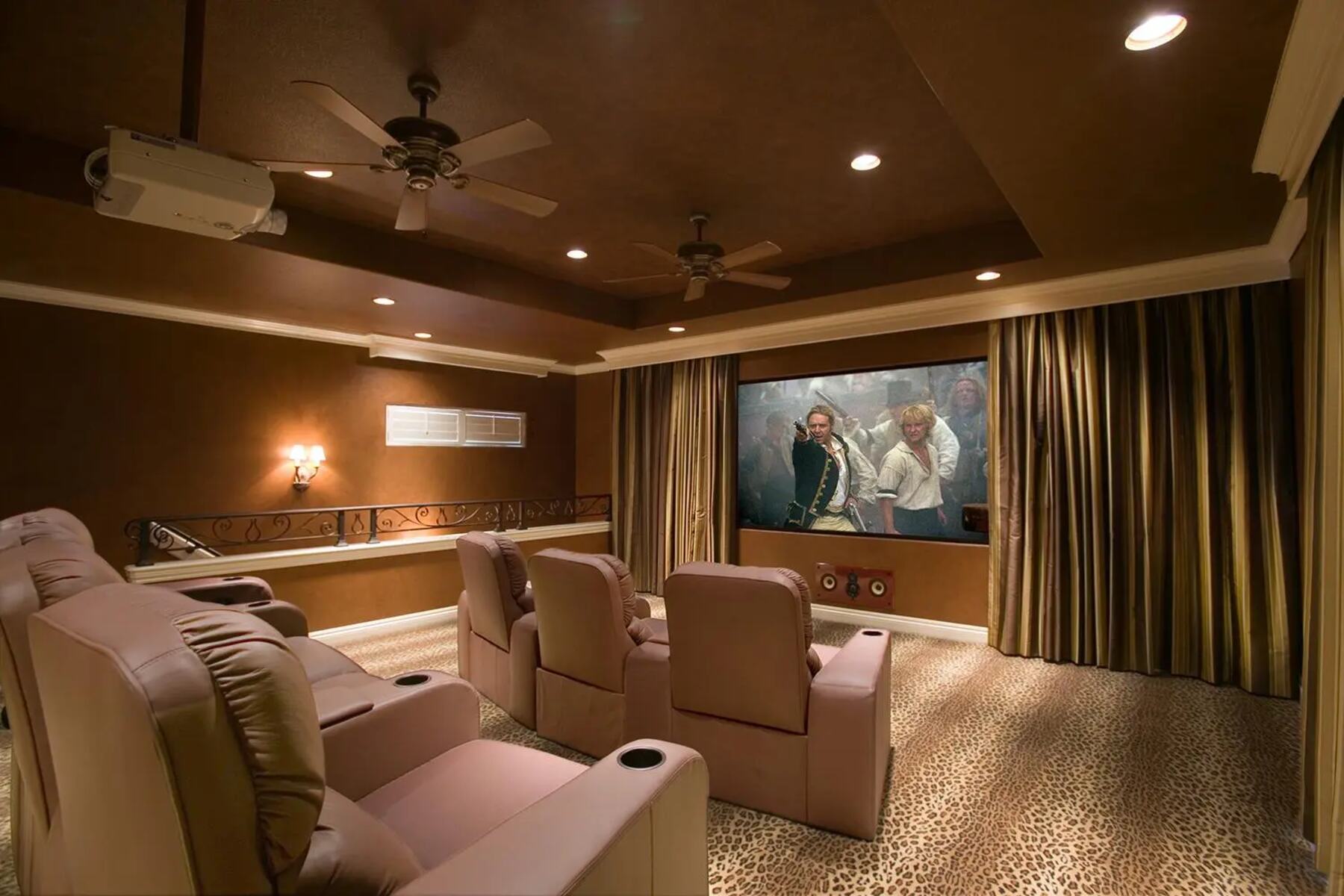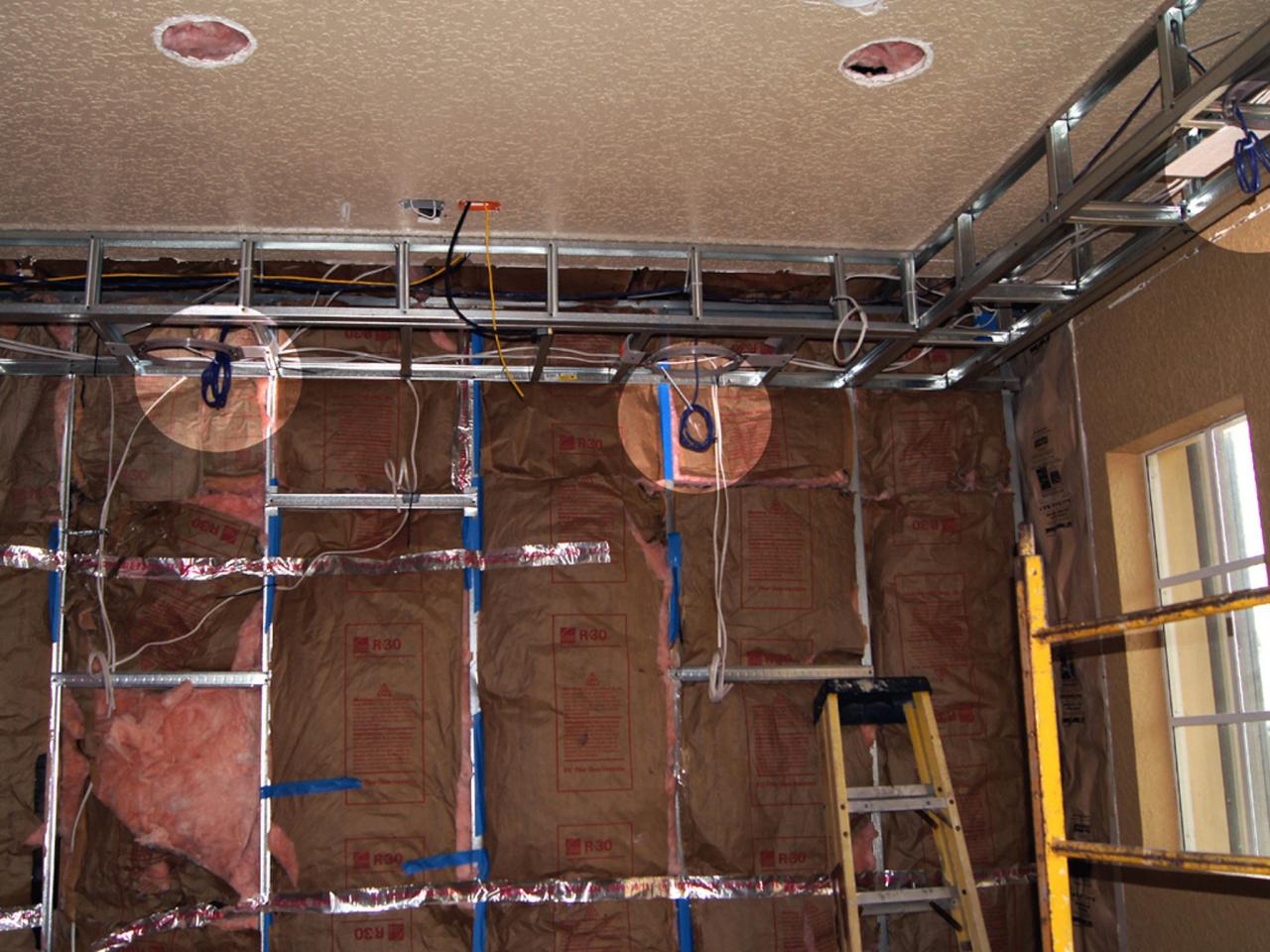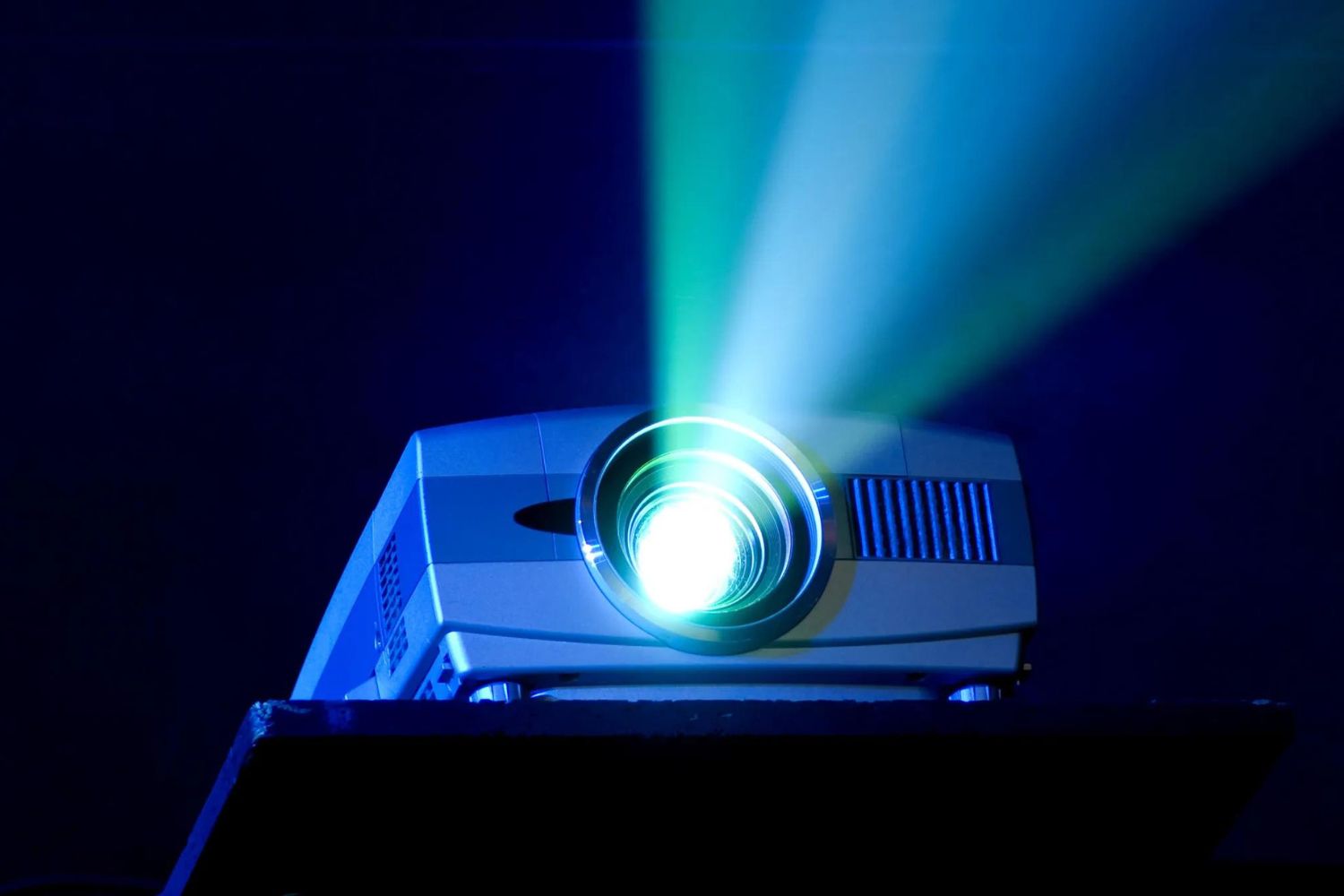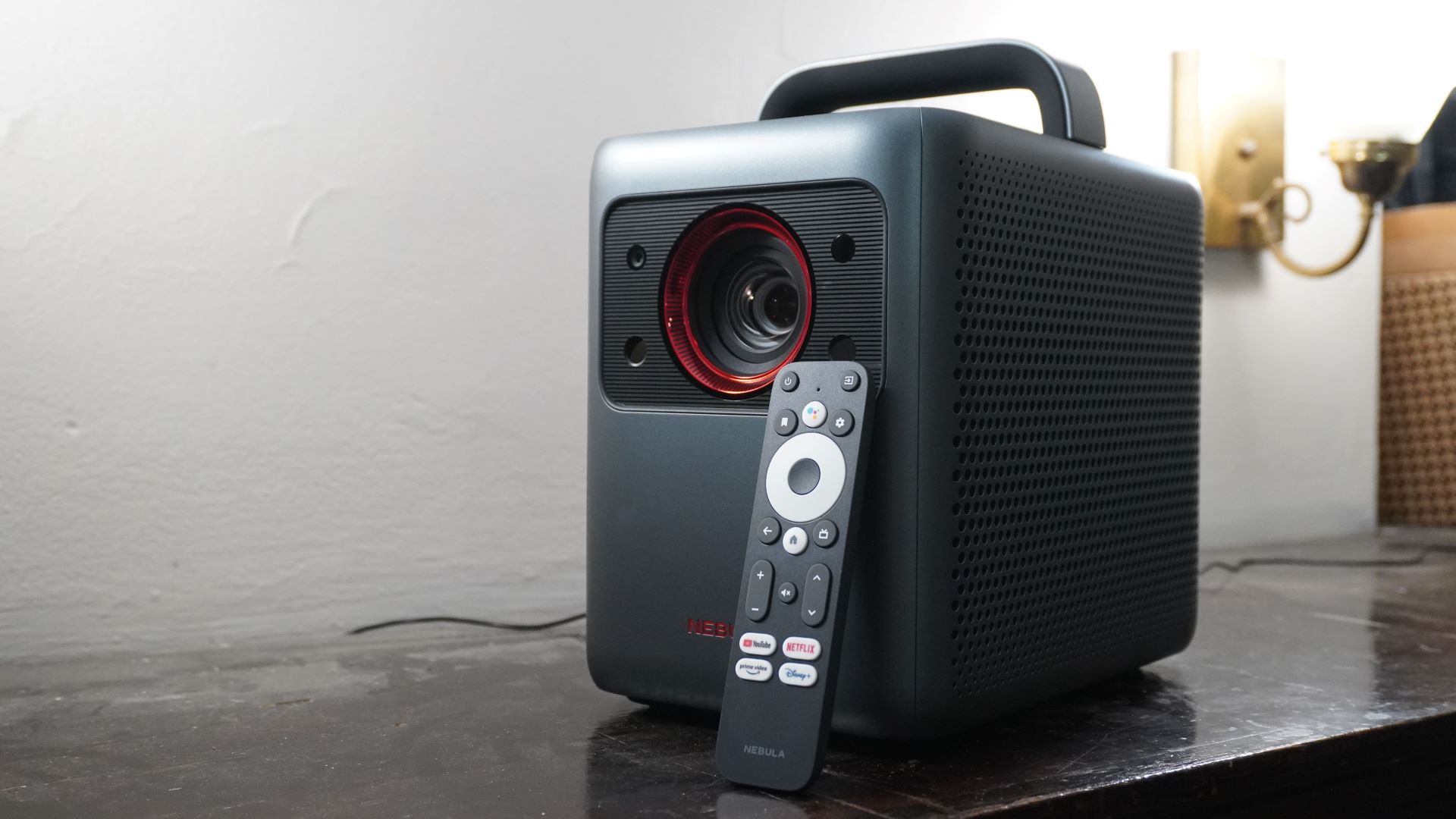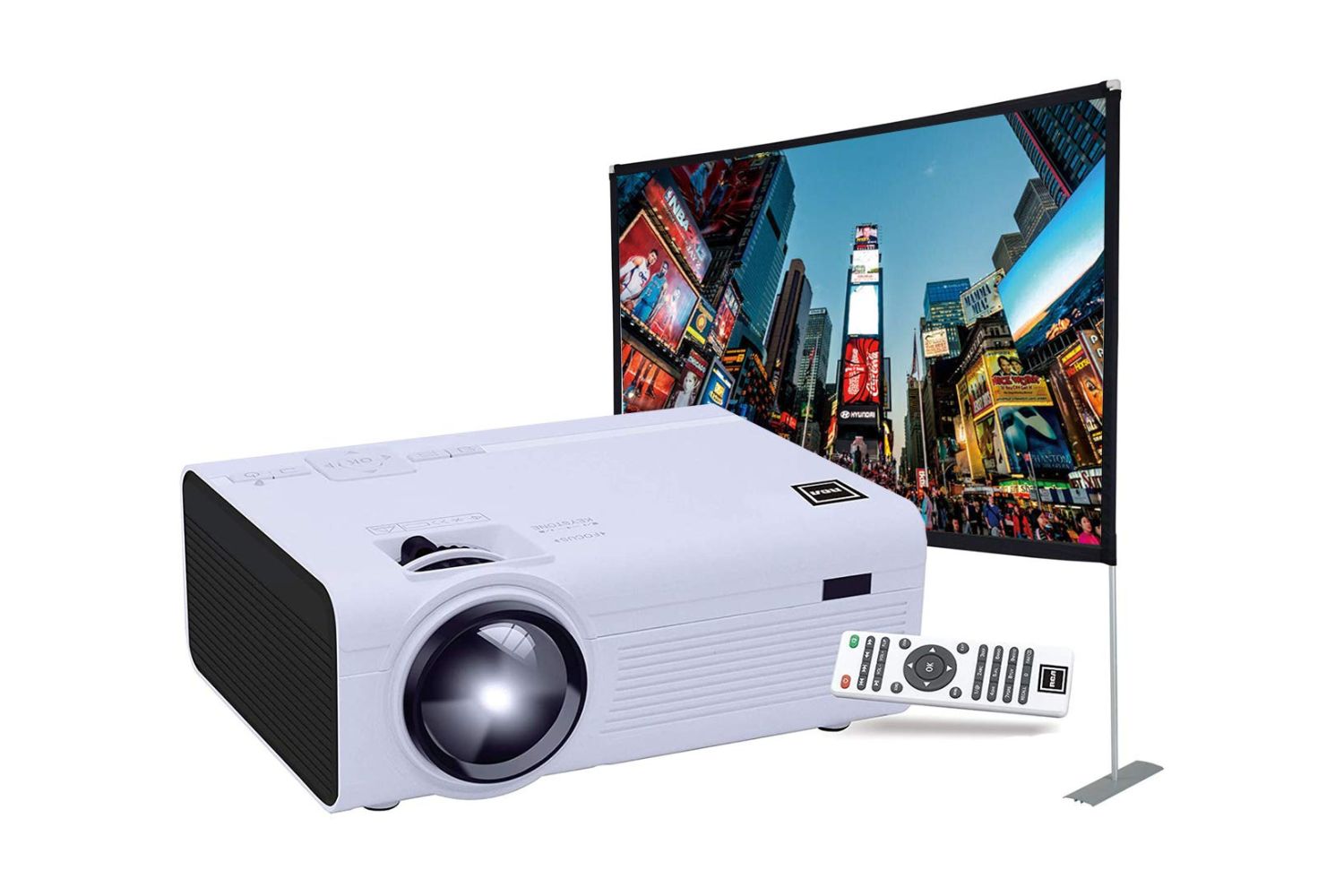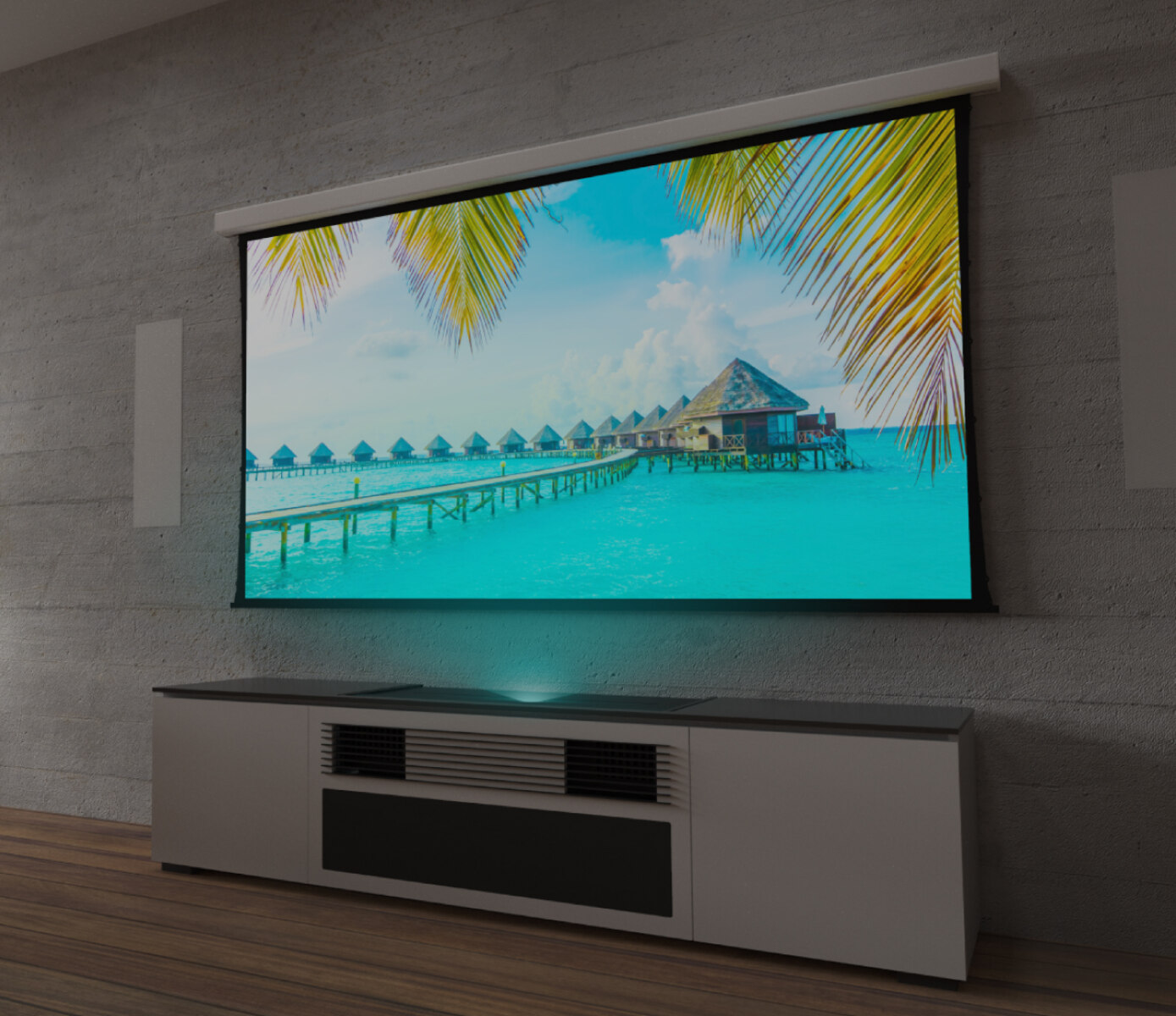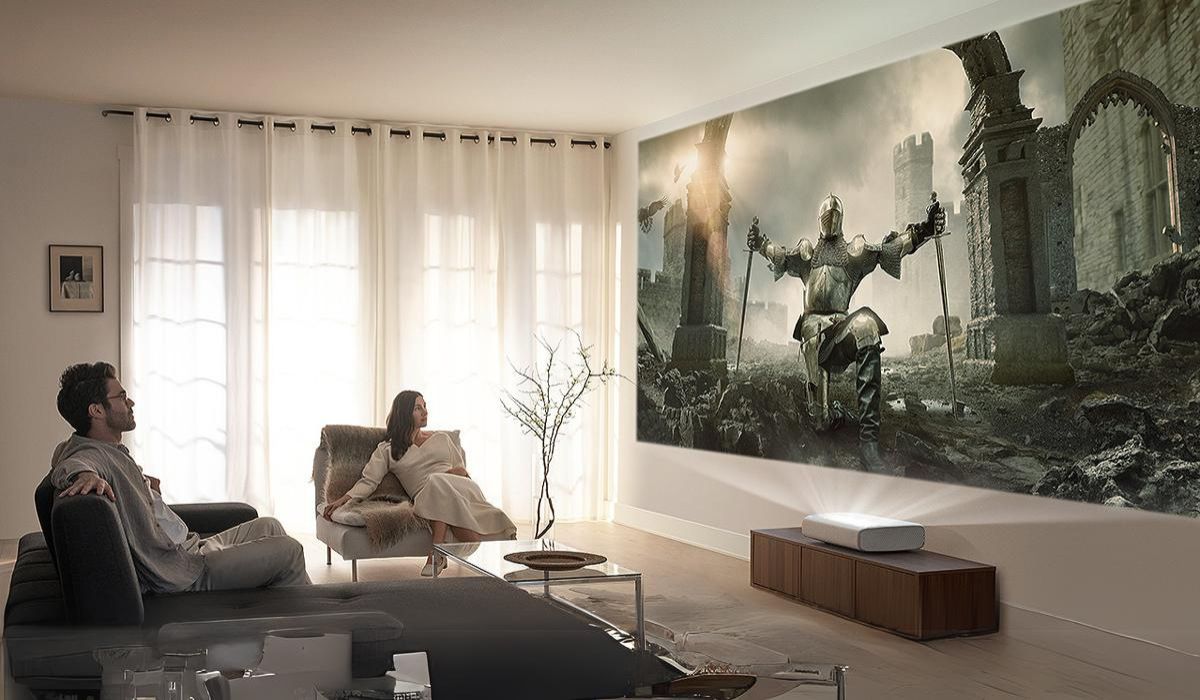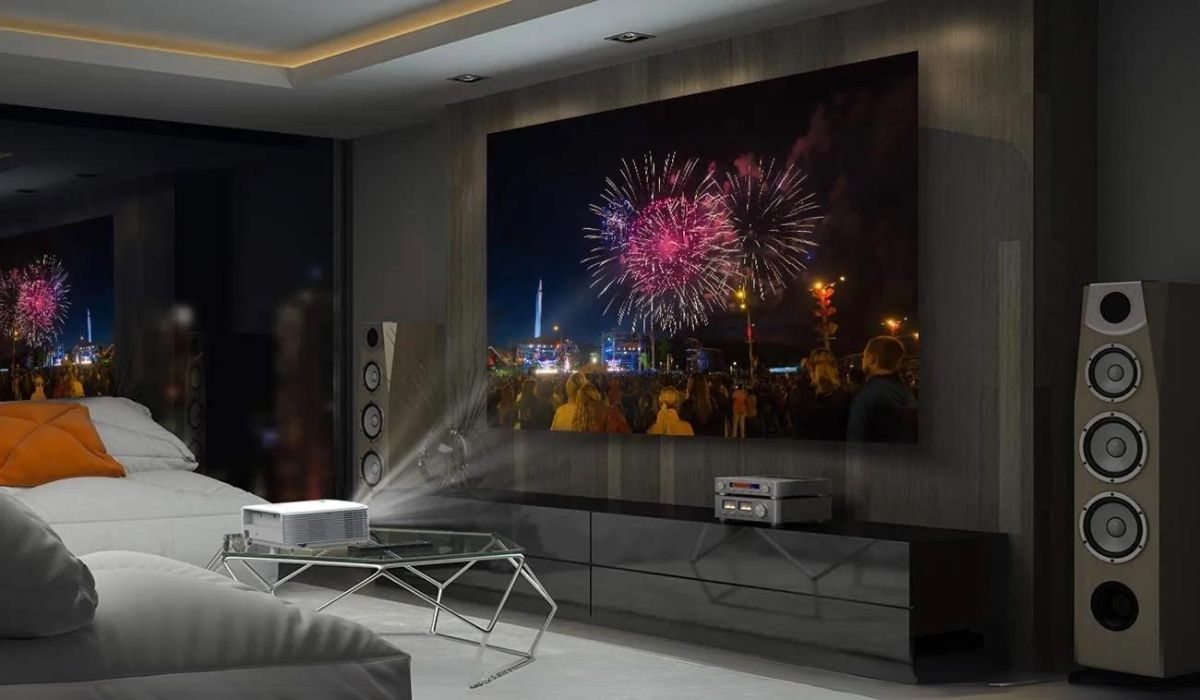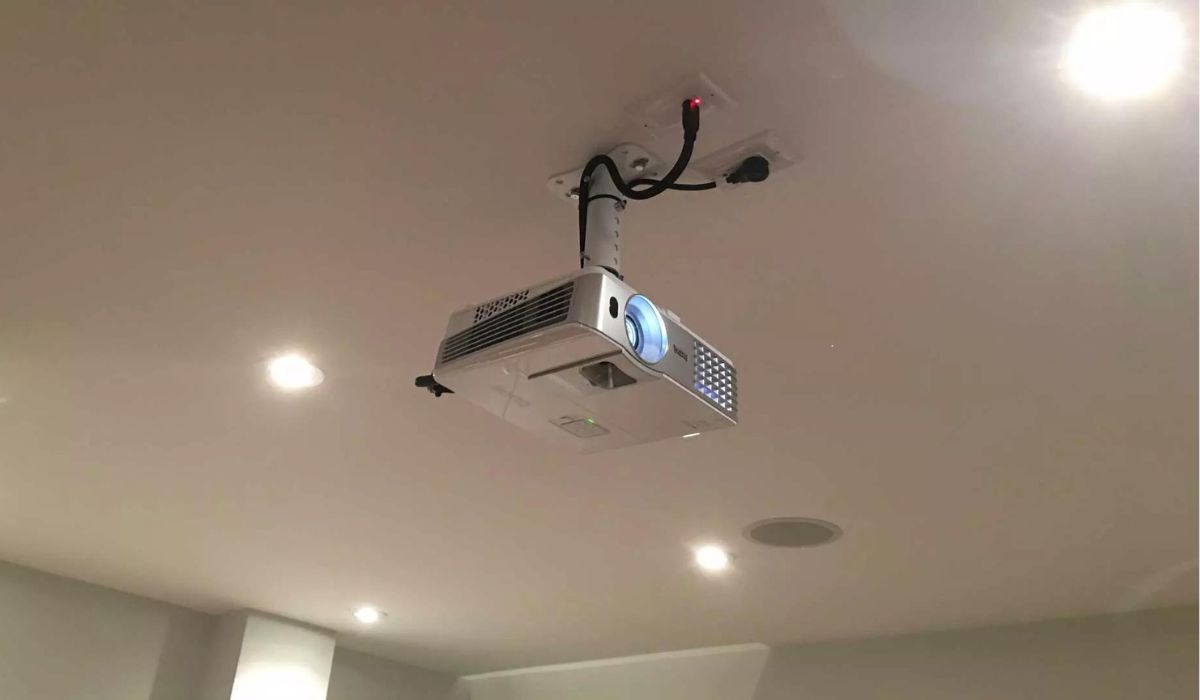Introduction
Welcome to the world of home entertainment! With the rapid advancement of technology, projectors have become an increasingly popular choice for creating a cinema-like experience in the comfort of your own home. Whether you enjoy watching movies, playing video games, or giving presentations, a high-quality projector can provide you with a larger-than-life display that will surely enhance your viewing experience.
However, with so many options available in the market, it can be overwhelming to choose the right projector that suits your needs and preferences. That’s where we come in! In this article, we will guide you through the essential factors to consider when selecting a projector for home entertainment.
When deciding on a projector, you need to keep in mind several crucial aspects like resolution, brightness, contrast ratio, throw distance, connectivity options, sound quality, lamp life, 3D capability, weight and portability, as well as your budget. By understanding these factors and how they impact your viewing experience, you can make an informed decision and find the perfect projector for your home entertainment setup.
Before we dive into the details, it’s important to note that choosing a projector is a subjective process. Different individuals have different preferences and requirements. Therefore, think about how you plan to use the projector, the environment it will be used in, and your personal entertainment preferences while considering the following factors. Let’s explore each one in more detail.
Resolution
Resolution is one of the most critical factors to consider when choosing a projector for home entertainment. It refers to the number of pixels that make up the image displayed by the projector. The higher the resolution, the sharper and more detailed the image will be.
There are several common resolution options available in projectors, including HD (1280×720 pixels), Full HD (1920×1080 pixels), and 4K Ultra HD (3840×2160 pixels). The choice of resolution depends on your viewing preferences and the content you plan to watch. If you primarily watch movies or play high-definition games, it’s recommended to go for a projector with at least Full HD resolution to ensure a crisp and immersive experience.
However, it’s worth noting that higher resolution projectors often come with a higher price tag. If you are on a tight budget or plan to use the projector for casual viewing, an HD projector may suffice. Consider your priorities and find the balance between cost and image quality that works best for you.
In addition to the resolution, it’s essential to consider the native aspect ratio of the projector. The aspect ratio refers to the proportional relationship between the width and height of the display. The most common aspect ratios for projectors are 16:9 (widescreen) and 4:3 (standard). Widescreen aspect ratios are suitable for watching movies and playing games, while standard aspect ratios are more common for business presentations.
Ultimately, the resolution and aspect ratio you choose should align with your viewing preferences and the type of content you plan to enjoy on your home entertainment projector.
Brightness
Brightness is another crucial factor to consider when selecting a projector for home entertainment. It refers to the amount of light emitted by the projector, measured in lumens. The level of brightness you need depends on the ambient lighting conditions in your viewing area.
If you plan to use the projector in a dedicated home theater room with controlled lighting, a projector with a higher brightness level is not as necessary. However, if your viewing area has ambient light or large windows that cannot be fully covered, you will want a projector with higher brightness to combat the external light and maintain a vibrant image.
The brightness level of projectors can range from 1,000 to over 5,000 lumens. For a darkened room, a projector with a brightness level between 1,500 and 2,500 lumens should be sufficient. However, if you have a room with a fair amount of ambient light, consider a projector with a brightness level of 3,000 lumens or more to ensure a clear and visible image.
It’s important to note that higher brightness usually comes at a higher cost. If you have a limited budget or a darker viewing environment, you may opt for a projector with a lower brightness level. However, it’s crucial to find the right balance between brightness and image quality, as too low of a brightness level can result in a washed-out or dim image.
Additionally, keep in mind that the brightness of a projector tends to decrease over time as the lamp ages. Therefore, it’s advisable to choose a projector that offers adjustment settings for brightness and a long lamp life to ensure consistent performance throughout its lifespan.
By considering the brightness level that suits your viewing environment and taking into account your budget, you can choose a projector that provides an optimal viewing experience with vivid and vibrant visuals.
Contrast Ratio
When it comes to selecting a projector for home entertainment, the contrast ratio is an essential aspect to pay attention to. The contrast ratio refers to the difference between the brightest whites and the deepest blacks that a projector can produce. This measurement determines the level of detail and depth in the projected images.
A higher contrast ratio results in more vibrant and realistic images. It allows for better differentiation between light and dark areas, enhancing the overall visual experience. The contrast ratio is especially important when watching movies or playing games that have a lot of dark scenes or shadows, as it ensures that the details are not lost in the darkness.
Projectors typically have two types of contrast ratios: native contrast ratio and dynamic contrast ratio. The native contrast ratio is the inherent contrast capability of the projector, while the dynamic contrast ratio is a feature that adjusts the contrast on the fly, offering a higher contrast ratio by automatically altering the brightness levels in response to the content being displayed.
It’s important to consider both the native and dynamic contrast ratios when choosing a projector. Look for projectors with higher contrast ratios, as they will deliver more visually impressive and immersive image quality.
Keep in mind that the contrast ratio alone does not guarantee a superior picture quality. Other factors, such as the lighting conditions in your viewing area and the content being displayed, also play a role in the overall image quality. Therefore, it’s advisable to balance the contrast ratio with other essential features, such as brightness and resolution, to ensure a well-rounded home entertainment experience.
Throw Distance
Throw distance is an important consideration when choosing a projector for home entertainment, as it determines how far the projector needs to be placed from the screen to achieve the desired image size. The throw distance is measured from the front of the lens to the screen.
Projectors have different throw ratios, which indicate the relationship between the throw distance and the width of the projected image. A short-throw projector has a small throw ratio, meaning it can produce a large image even when placed close to the screen. On the other hand, a long-throw projector has a larger throw ratio and needs to be placed farther away from the screen to create a large image.
Before purchasing a projector, it’s crucial to consider the available space in your viewing area. Measure the distance from the desired mounting location to the screen to determine the appropriate throw distance. This will help you choose a projector with the right throw ratio to fit your space and achieve the desired screen size.
Additionally, keep in mind that different projectors have different zoom capabilities, allowing you to adjust the image size without changing the throw distance. This feature can be beneficial if you have limited space but still desire a larger image. However, it’s important to note that excessive zooming can impact image quality. Therefore, it’s recommended to choose a projector with a throw ratio that aligns with your desired screen size to maintain optimal image sharpness and clarity.
Remember to also consider the vertical lens shift and keystone correction features, which allow you to adjust the image vertically and horizontally to achieve a properly aligned and rectangular image. These features can be helpful if the projector is placed at an angle or if the screen is not perfectly positioned.
By understanding the throw distance and how it relates to your available space, you can select a projector that fits your viewing area and ensures an optimal viewing experience.
Connectivity Options
When choosing a projector for home entertainment, it’s essential to consider the connectivity options available. The connectivity options determine how the projector can be connected to various devices such as Blu-ray players, gaming consoles, streaming devices, and laptops, enabling you to enjoy a wide range of content on the big screen.
The most common connectivity options you should look for in a projector include HDMI, VGA, USB, and wireless connectivity. HDMI is the preferred option as it provides high-quality digital audio and video transmission. It allows for seamless connection with devices like Blu-ray players, gaming consoles, and streaming devices, delivering sharp and vibrant visuals along with immersive surround sound.
VGA (Video Graphics Array) is an older analog connection that is still commonly used for connecting laptops and older devices. While it may not provide the same level of image quality as HDMI, it can still be useful for certain setups.
USB connectivity can be handy for easily accessing and playing media files directly from a USB flash drive or external hard drive. Some projectors also support wireless connectivity options, such as Wi-Fi or Bluetooth, allowing for wireless streaming of content from compatible devices.
Another important consideration is the number of connectivity ports available on the projector. Ensure that the projector has an adequate number of ports to accommodate all your devices without the need for frequent unplugging and reconnecting.
It’s also worth checking if the projector supports audio output options, such as a built-in speaker or audio output port, to enable connection with external speakers or a sound system for an enhanced audio experience.
By selecting a projector with a wide range of connectivity options, you can enjoy seamless connectivity with your preferred devices and access a vast array of content, enhancing your home entertainment possibilities.
Sound Quality
While the visual experience is essential, sound quality is an equally crucial aspect to consider when choosing a projector for home entertainment. The built-in speaker(s) of the projector play a significant role in delivering an immersive and engaging audio experience.
When evaluating the sound quality of a projector, consider factors such as speaker power, frequency response, and audio enhancement features. The speaker power is measured in watts, and a higher wattage generally indicates louder and more robust audio. However, it’s important to keep in mind that built-in projector speakers are often not as powerful or high-fidelity as dedicated audio systems, so external speakers may be needed for a more enhanced experience.
The frequency response of the speakers is another crucial factor to consider. A broader frequency response range allows the speakers to reproduce a wider range of sound frequencies, resulting in more detailed and accurate audio reproduction. Look for projectors with a wider frequency response range for a more immersive sound experience.
Some projectors also offer audio enhancement features such as virtual surround sound, equalizer settings, or even Bluetooth connectivity to connect external speakers or headphones. These features can greatly enhance the audio experience and make it more immersive and tailored to your preferences.
If you are an audiophile or have high-quality sound requirements, it’s recommended to invest in a separate audio system, such as a soundbar or a home theater system. This will allow you to achieve a more immersive and dynamic audio experience that complements the stunning visuals.
In summary, while built-in projector speakers can provide basic audio, they may not offer the same level of sound quality as dedicated audio systems. Consider the speaker power, frequency response, and available audio enhancement features of the projector, and supplement it with an external audio system for a truly captivating home entertainment experience.
Lamp Life
The lamp life of a projector is an important factor to consider when selecting a projector for home entertainment. The lamp life refers to the expected lifespan of the projector’s lamp, which is the primary light source that illuminates the projected image.
The lamp life is typically measured in hours and can vary greatly depending on the projector model and usage. Projectors generally have a lamp life ranging from 2,000 to 10,000 hours or more. It’s important to note that as the lamp ages, its brightness may decrease, affecting the overall image quality.
When deciding on a projector, consider your usage patterns and how frequently you plan to use it. If you anticipate using the projector for extended periods, such as for movie marathons or gaming sessions, you may want to choose a projector with a longer lamp life to minimize the frequency of lamp replacements.
Additionally, it’s worth noting that the cost of replacing the projector lamp can vary depending on the brand and model. Research the availability and cost of replacement lamps for the projector you are considering to ensure you are aware of any additional expenses in the future.
To extend the lamp life and optimize its performance, it’s advisable to follow proper maintenance and usage guidelines provided by the manufacturer. This may include ensuring proper ventilation and airflow to prevent overheating, cleaning the projector regularly, and avoiding frequent power on/off cycles, as they can decrease the overall lamp life.
Lastly, some projectors offer an “eco mode” or “energy-saving mode” that can extend the lamp life by reducing the brightness level and power consumption. This mode is suitable for environments with controlled lighting or when using the projector for less demanding content.
By understanding the lamp life of a projector and considering your usage patterns, you can choose a projector that aligns with your needs and provides long-lasting performance for your home entertainment setup.
3D Capability
If you are a fan of 3D movies or gaming, considering the 3D capability of a projector is essential. 3D capability allows you to enjoy immersive and lifelike visuals that appear to pop out from the screen.
When choosing a projector with 3D capability, there are a few key points to consider. Firstly, check if the projector uses active or passive 3D technology. Active 3D technology requires glasses that sync with the projector to create the 3D effect, while passive 3D technology uses polarized glasses like the ones found in movie theaters. Both technologies have their pros and cons, so it’s important to choose the one that suits your preferences.
Next, verify if the projector is compatible with common 3D formats, such as Blu-ray 3D or 3D gaming consoles. Ensure that the projector can handle the specific 3D formats that you plan to utilize to avoid any compatibility issues.
It’s also worth considering the brightness and image quality in 3D mode. Some projectors may experience a decrease in brightness when displaying 3D content, as the glasses filter out some of the light. Look for projectors with high brightness levels and good image quality in 3D mode to ensure an enjoyable 3D experience without sacrificing visual clarity.
Keep in mind that not all projectors come with built-in 3D capabilities. Some projectors may require additional accessories, such as a 3D emitter or compatible glasses, which may need to be purchased separately. Factor in these additional costs and availability before making your final decision.
Lastly, consider how frequently you plan to use the 3D feature. If 3D content is a significant part of your home entertainment experience, investing in a projector with reliable and high-quality 3D capability is a wise choice. However, if you rarely watch or play 3D content, choosing a projector without 3D capability may be a more cost-effective option.
By taking into account these aspects, you can select a projector with the 3D capability that aligns with your viewing preferences and provides an immersive 3D experience for your home entertainment setup.
Weight and Portability
Weight and portability are important factors to consider when choosing a projector for home entertainment, especially if you plan to move or transport the projector frequently.
The weight of a projector can vary significantly depending on its size, features, and build. Lighter projectors are generally more portable and easier to carry around, making them ideal for those who need a projector for multiple locations or want the flexibility to set up their home entertainment system in different rooms.
If you plan to mount the projector on the ceiling or a fixed location, the weight may be less of a concern. However, if you anticipate moving the projector from room to room or taking it to different venues, a lightweight and compact projector will be more convenient.
In addition to weight, consider the overall size and form factor of the projector. Compact projectors are easier to transport and store, while larger projectors may require more space and additional protective measures during transportation.
It’s also beneficial to check if the projector comes with a carrying case or a protective bag. These accessories can help protect the projector from damage during transit and make it easier to carry around.
Another factor to consider is the availability of quick setup features. Look for projectors that offer easy installation and a user-friendly interface, as this can save you time and effort when setting up the projector in different locations.
However, it’s important to note that projectors with smaller sizes and lighter weights may sacrifice some features or performance compared to larger, heavier models. Therefore, it’s essential to find a balance between portability and the specifications and functionalities that are important for your desired home entertainment experience.
By considering the weight and portability of a projector, you can choose a model that suits your mobility needs and gives you the flexibility to enjoy your home entertainment system wherever you go.
Price and Budget Considerations
Price and budget considerations play a significant role when selecting a projector for home entertainment. It’s important to establish a budget range and identify the features and specifications that are essential to you while staying within your means.
Projector prices can vary widely, ranging from budget-friendly options to high-end models with advanced features. It’s crucial to determine your priorities and needs to find the right balance between price and performance.
When comparing projectors based on price, consider factors such as resolution, brightness, contrast ratio, and connectivity options. Determine which features are critical for your home entertainment setup. For example, if you primarily watch movies, investing in a projector with higher resolution and contrast ratio may be more important to you than the number of connectivity options.
It’s also worth noting that higher-priced projectors often come with more advanced features and better image quality. However, it doesn’t necessarily mean that a budget-friendly projector won’t meet your needs. Advances in technology have made it possible to find affordable projectors that offer decent performance and can still provide an enjoyable home entertainment experience.
Consider your long-term plans and how much you will use the projector. If you anticipate using it frequently or for extended durations, investing in a higher-quality projector with better build quality and longer lamp life may be worth the extra cost.
Additionally, it’s important to look for reputable brands and read reviews from other users to ensure reliable performance and customer support. Sometimes, spending a bit more on a trusted brand can provide peace of mind and better long-term value.
Lastly, keep in mind that the price of the projector is not the only cost to consider. Factor in the expenses of accessories such as cables, mounts, screens, and replacement lamps, as well as any additional features or equipment you may need.
By setting a budget and considering the features and specifications that are crucial to your home entertainment needs, you can find a projector that offers the best value for your money.
Conclusion
Choosing the right projector for home entertainment is a decision that can greatly enhance your viewing experience. By considering factors such as resolution, brightness, contrast ratio, throw distance, connectivity options, sound quality, lamp life, 3D capability, weight and portability, as well as price and budget, you can make an informed decision that aligns with your preferences and needs.
Resolution is key to achieving sharp and detailed images, so consider your viewing preferences and content requirements when selecting the appropriate resolution. The brightness of the projector should be adjusted according to the lighting conditions in your viewing area to maintain vibrant and visible visuals.
The contrast ratio enhances the depth and detail of the projected images, creating a more immersive viewing experience. Evaluate the throw distance to ensure that the projector can deliver the desired screen size within the available space.
Connectivity options play a crucial role in accessing content from various devices, so prioritize projectors with versatile connectivity options to suit your multimedia needs. Evaluate the sound quality of the projector’s built-in speakers and consider external audio options for a more immersive audio experience.
Consider the lamp life of the projector to determine maintenance needs and potential future costs. If you enjoy 3D content, choose a projector with reliable and compatible 3D capability for an enhanced visual experience.
Weight and portability are important considerations for those who require mobility or plan to set up the projector in multiple locations. Establishing a budget and staying within it while considering the desired features and performance will help you find a projector that provides the best value for your money.
Ultimately, the choice of a projector for home entertainment is personal and subjective. Consider your specific needs, preferences, and usage patterns to find the projector that will bring your home entertainment setup to life and provide countless hours of enjoyment.







